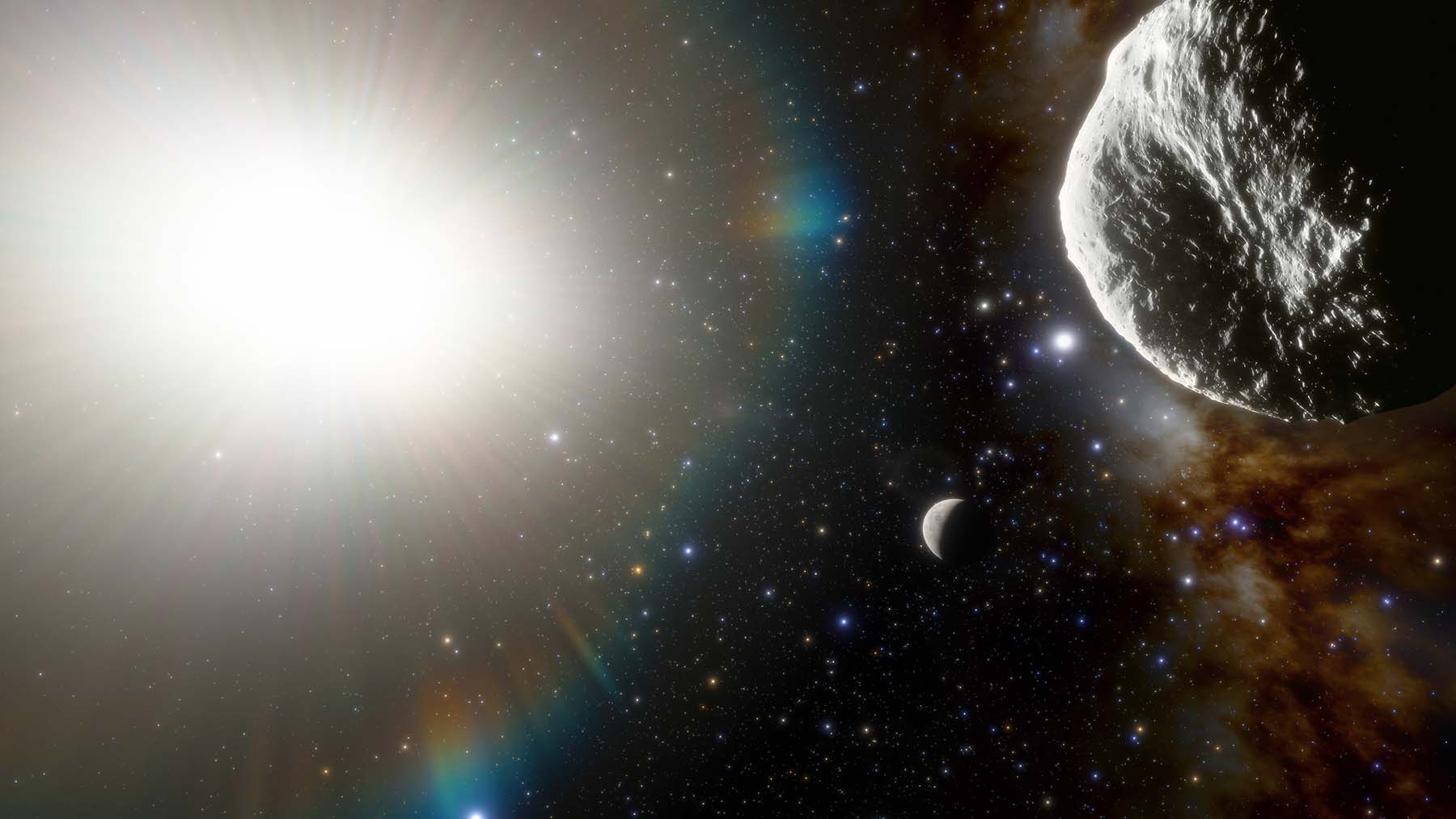NOIRLab: Fastest Orbiting Asteroid Discovered at Cerro Tololo

The fastest asteroid in the Solar System has been discovered at NOIRLab’s CTIO using the powerful 570-megapixel Dark Energy Camera (DECam) in Chile — the Sun’s new nearest neighbor. This artist’s rendering shows the asteroid (above) and the planet Mercury (below). Credit: CTIO/NOIRLab/NSF/AURA/J. da Silva (Spaceengine)
Using the powerful 570-megapixel Dark Energy Camera (DECam) in Chile, astronomers discovered an asteroid with the shortest orbital period of any known asteroid in the Solar System. The orbit of the approximately 1-kilometer-diameter asteroid takes it as close as 20 million kilometers (12 million miles or 0.13 au), from the Sun every 113 days. Asteroid 2021 PH27, revealed in images acquired during twilight, also has the smallest mean distance (semi-major axis) of any known asteroid in our Solar System — only Mercury has a shorter period and smaller semi-major axis. The asteroid is so close to the Sun’s massive gravitational field, it experiences the largest general relativistic effects of any known Solar System object.
The asteroid designated 2021 PH27 was discovered by Scott S. Sheppard of the Carnegie Institution of Science in data collected by the Dark Energy Camera (DECam) mounted on the Víctor M. Blanco 4-meter Telescope at Cerro Tololo Inter-American Observatory (CTIO) in Chile. The discovery images of the asteroid were taken by Ian Dell’antonio and Shenming Fu of Brown University in the twilight skies on the evening of 13 August 2021. Sheppard had teamed up with Dell’antonio and Fu while conducting observations with DECam for the Local Volume Complete Cluster Survey, which is studying most of the massive galaxy clusters in the local Universe [1]. They took time out from observing some of the largest objects millions of light-years away to search for far smaller objects — asteroids — closer to home.
One of the highest-performance, wide-field CCD imagers in the world, DECam was designed for the Dark Energy Survey (DES) funded by the DOE, was built and tested at DOE’s Fermilab, and was operated by the DOE and NSF between 2013 and 2019. At present DECam is used for programs covering a huge range of science. The DECam science archive is curated by the Community Science and Data Center (CSDC). CTIO and CSDC are programs of NSF’s NOIRLab.
Twilight, just after sunset or before sunrise, is the best time to hunt for asteroids that are interior to Earth’s orbit, in the direction of the two innermost planets, Mercury and Venus. As any stargazer will tell you, Mercury and Venus never appear to get very far from the Sun in the sky and are always best visible near sunrise or sunset. The same holds for asteroids that also orbit close to the Sun.
Following 2021 PH27’s discovery, David Tholen of the University of Hawai‘i measured the asteroid’s position and predicted where it could be observed the following evening. Subsequently, on 14 August 2021, it was observed once more by DECam, and also by the Magellan Telescopes at the Las Campanas Observatory in Chile. Then, on the evening of the 15th, Marco Micheli of the European Space Agency used the Las Cumbres Observatorynetwork of 1- to 2-meter telescopes to observe it from CTIO in Chile and from South Africa, in addition to further observations from DECam and Magellan, as astronomers postponed their originally scheduled observations to get a sight of the newly found asteroid.
